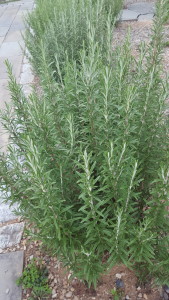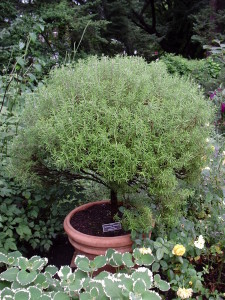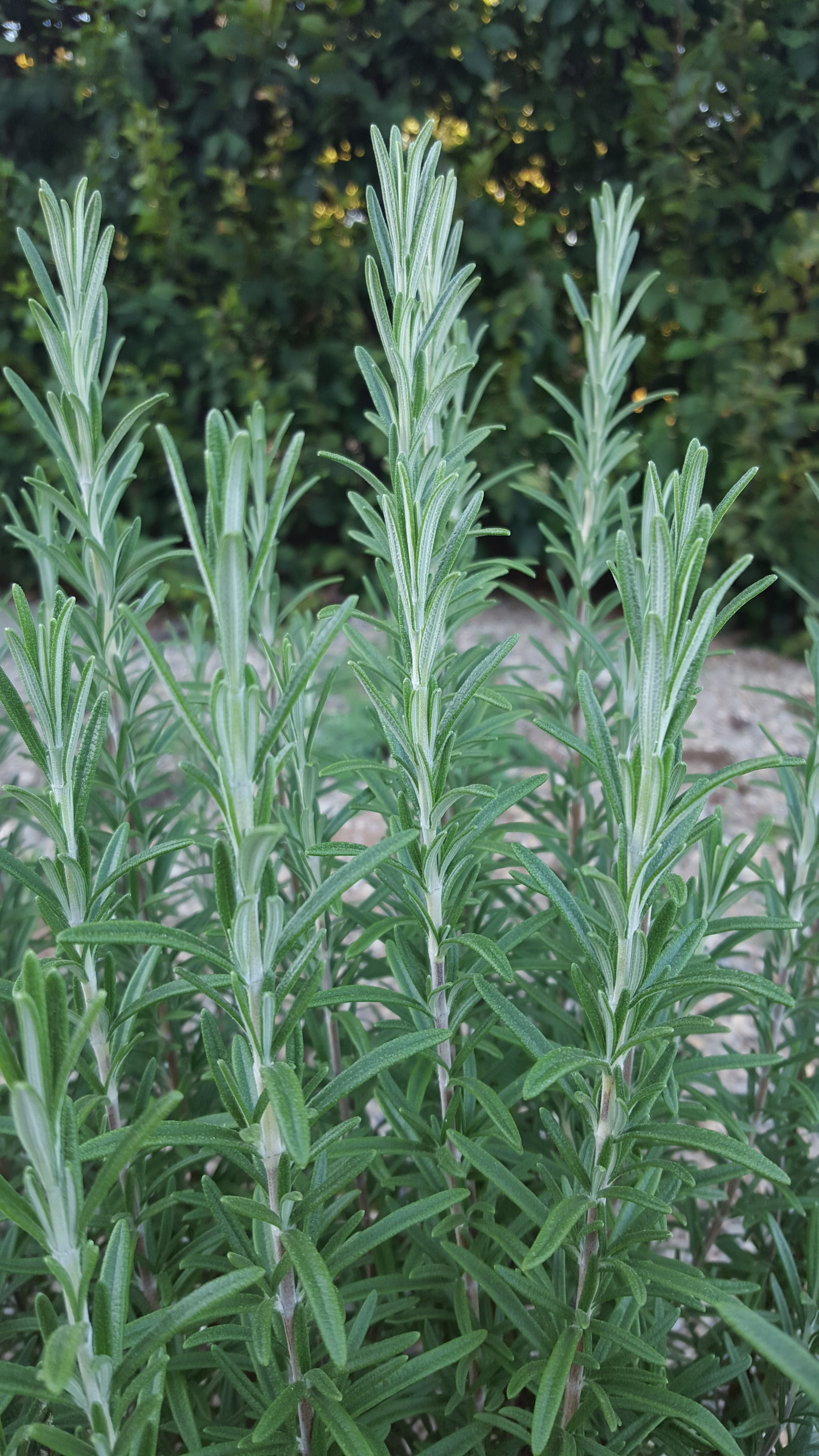
Rosemary Barbeque
Rosemary (Rosmarinus officinalis) is a perennial aromatic shrub that is native to the Mediterranean region. Its leaves are needles similar to conifers. It gets its name from a legend that claims that the Virgin Mary draped her blue cloak over a white blossomed rosemary. The flowers turned blue and the plant became known as Rose of Mary.
Rosemary is a popular culinary herb. It is widely used in the preparation of meats and stuffings. It is also used to flavor oils and vinegars. Branches, stripped of their needles, make excellent skewers for barbecue, infusing the taste of rosemary into your shish kebob ingredients. Be sure to soak them before using on the barbecue to avoid setting them on fire.
The oil of the rosemary plant has been used medicinally for a variety of ailments. It is said that just smelling rosemary can improve your memory.
Depending on the cultivar, rosemary can grow to 5’ tall. It is hardy through zone 7 unprotected and zone 6 with winter protection. It is evergreen in its growing zones. In zone 6, it is best to plant rosemary away from the prevailing winds and near a wall or foundation that retains some heat. In colder zones, rosemary should be brought indoors during the winter months. When nighttime temperatures dip below freezing, it’s time to bring your rosemary indoors.
Similar to other Mediterranean herbs, rosemary is drought tolerant. It is a perfect plant for a xeriscape. The plants prefer full sun and sandy, well-drained soil. Mulch your plants well to keep the roots cool during hot summers and to help the soil retain moisture.
Each spring you should prune away any dead branches to encourage new growth. You can prune and shape your plants in the spring before blooming which will remove the buds or you can wait until after your plants have bloomed to prune them. How much you prune is up to you. In warm areas, rosemary is often pruned into a hedge. The rule of thumb is to prune approximately 1/3 of the height, but you can prune more if you like. Rosemary can take a hard pruning. It can even be shaped into topiary.

Rosemary in a container
Rosemary can be grown in containers. Provide it with full sun and well-drained soil. Water only when the soil gets dry. When grown indoors, be sure to provide a humid environment for your plants. Rosemary absorbs moisture from the air as well as the soil. If the air is too dry, your plant will dry. The easiest way to provide the proper humidity is to fill the saucer beneath your container with gravel and keep the gravel well-watered. The evaporating water will provide enough humidity to keep your plant happy and healthy.
Because rosemary can grow quite large, when grown in a container it is often necessary to prune both the plant and its roots to keep it to a manageable size. To root prune, remove the plant from its container. Cut off up to 2” around the sides and bottom of the rootball. Be sure to prune a comparable amount from the top of the plant. The roots provide water and nutrients to the top of the plant and if there aren’t enough roots, parts of the top will die.
Rosemary is most often propagated by cuttings. Cuttings are easy to do. Cut off 2” to 2 ½” of actively growing branches. Carefully remove the bottom foliage and dip the cut end in rooting hormone. Plant your cuttings in a soilless mix. Mist every few days to keep them moist. Roots should start to develop in 2 to 3 weeks. If the cutting is developing new leaves, the roots have grown. You can encourage your new plants to grow new branches by pinching off the terminal bud.
Rosemary is not normally grown from seed for two reasons: poor germination and plant variability. Not all of the offspring will be the same as the parent plants because the parents are hybrids.
If you wish to grow from seed, start your seeds indoors 8 weeks before your last frost date. Sow the seeds in a soilless mix and lightly cover them. Keep the mix evenly moist. Do not allow it to dry out. Germination should occur in 15 to 25 days. Keep your seedlings evenly moist as they grow. Once they have reached a height of 3 inches, all danger of frost has passed, and the soil has reached a temperature of 70⁰F, you can transplant them into your garden.

